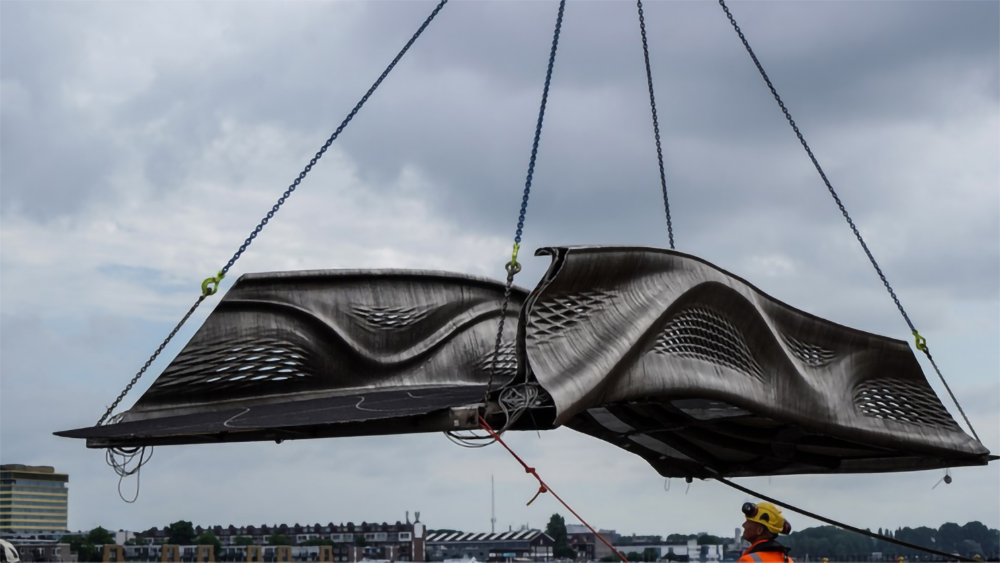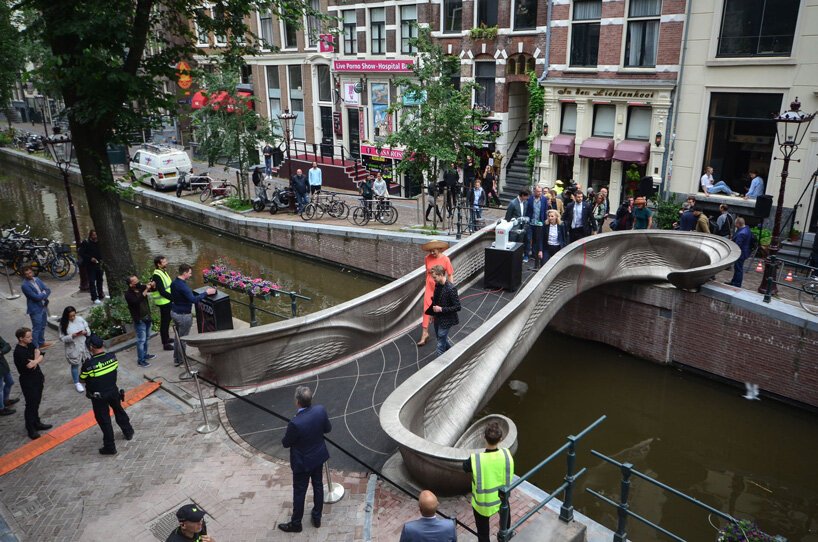Amsterdam Unveils the First 3D-Printed Steel Bridge in the World

The advancements in technology never fail to amaze. Computer technology, science, and engineering can combine to make innovations that are not only useful but pave the way for more marvels. Take 3D printing, for example. It started with small objects. Now it can print houses and bridges.
Amsterdam and its canal system
The 700-year old Amsterdam is like a living museum of a past era, with its stately patrician houses and centuries-old canals competing with modernity for space. Amsterdam’s inner city has a network of canals, which divides the city into 90 islands, connected by around 1,300 viaducts and bridges. Eight bridges span the Oudezijds Achterburgwal canal in particular.

A few days ago, the city of Amsterdam unveiled the first 3D printed bridge in the world, installed over the Oudezijds Achterburgwal canal, one of the oldest canals in the city. Her Majesty Queen Maxima led its inauguration on Thursday, July 15, 2021. In line with how the bridge was constructed, it used a robotic arm equipped with a pair of scissors to cut the ceremonial ribbon, with the Queen pressing the button to activate it.
The innovative stainless steel footbridge, which the creators say will be a living laboratory, will remain in place for two years. The original bridge, Bridge 204 or the Varkenssluis is under renovation.

The first 3D printed bridge in the world
The award-winning bridge, unveiled in July 2021, started its journey in 2015. It’s a product of the collaboration of an impressive roster of creative and technical experts. The group is led by MX3D, a leader in 3D metal printing, using a robotic wire arc additive manufacturing system. The Joris Laarman Lab designed the structure, while Arup led the structural engineering part.
Public support for the development of the bridge came from the City of Amsterdam, University of Twente, Technische Universiteit Delft, the Amsterdam Institute for Advanced Metropolitan Solutions, and the Imperial College London. The Alan Turing Institute Data Centric Engineering Programme, Air Liquide, Lloyd’s Register Foundation, Lenovo, and ABB Robotics are also supporters of the project.
Iconic innovation and design
Joris Laarman, a Dutch designer, designed the undulating, 12-meter (40-foot) futuristic stainless steel bridge. The unique flowing lines of the bridge were made possible with a 3D printing technique the creators call wire and arc additive manufacturing, which is a combination of welding with robotics.
It took four printing robots six months to print the bridge. With this construction, the printer did not use proprietary ink. Instead, the printer used steel, which also becomes an experiment to test whether you can apply it in 3D printing. The process underwent complex processes, several rigorous testing and the talents and skills of various scientists and engineers.
It used multi-axis robots to heat the steel to 1500°C (2732°F). The construction of the bridge was done layer by layer. It employed about 4,500 kg (10,000 pounds) of stainless steel. The final structure weighs six tons. It was transported to the site through the canal network of Amsterdam.
A living laboratory
The unique bridge will become a living laboratory, as it is equipped with a vast array of sensors. These sensors will measure, monitor, and analyze the performance of the stainless steel footbridge in handling pedestrian traffic. The data, which Imperial College London will collect will be examined by researchers, including The Alan Turing Institute. In addition, the data will be available to researchers and engineers worldwide.
They aim to check the bridge’s health in real-time, monitor how it will change over its lifespan, and understand the public’s interactions with infrastructure created through 3D printing.
Researchers will input the collected data into the bridge’s digital twin, the computerized version that will simulate the physical bridge accurately according to the real-time data that comes in. It will help test the behavior of 3D-printed steel and its application in real-world settings and new construction projects in the future.
Professor Leroy Gardner of the Department of Civil and Environmental Engineering of Imperial College London, a co-contributor of the project, sees the creation of the bridge as opening tremendous opportunities to the construction industry. 3D printing will allow more freedom in terms of material shapes and properties.